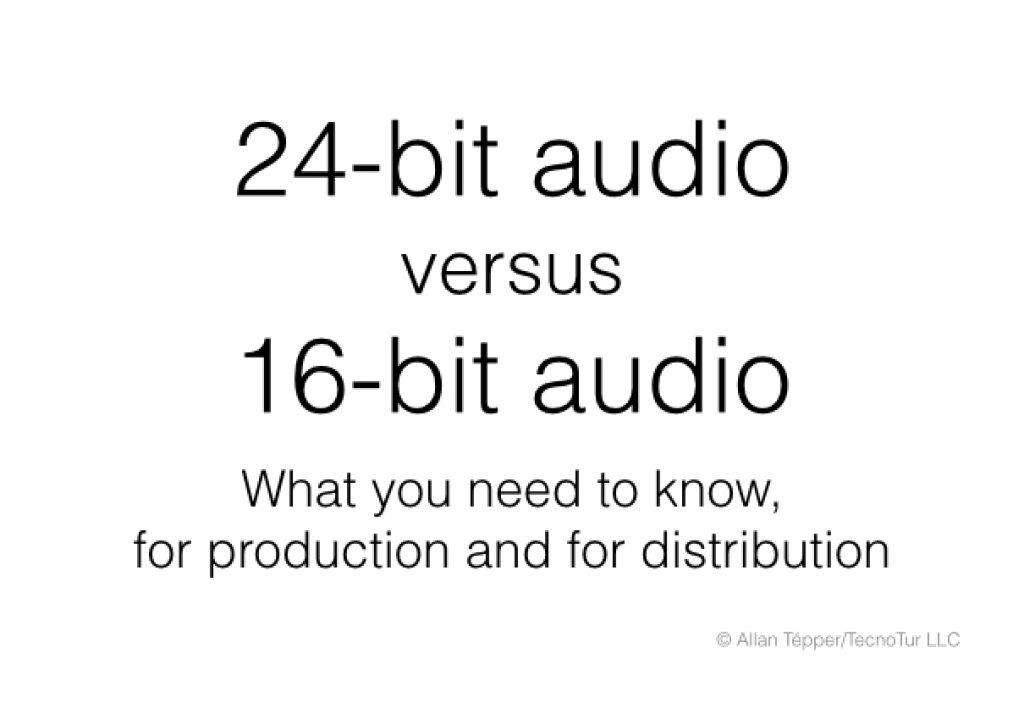In prior articles, I have clarified how vital it is to record and edit 48 kHz audio for today’s video productions. However, so far, I have barely touched the differences between 24-bit versus 16-bit audio production and distribution, for both audio/video and audio only programs. Whether or not you like Jack Bauer, you need to know about this 24.
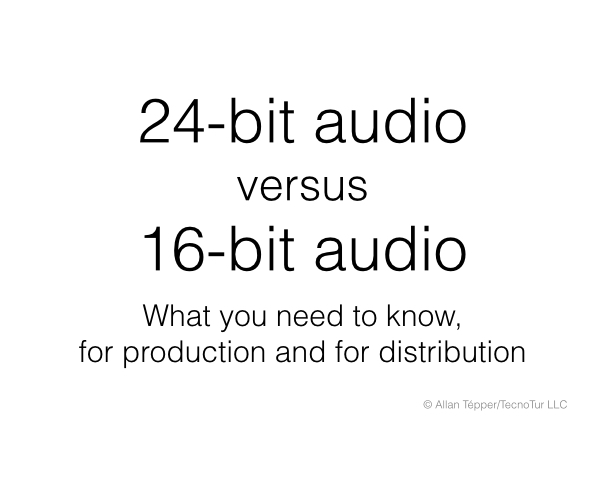
In prior articles, I have clarified how vital it is to record and edit 48 kHz audio for today’s video productions. However, so far, I have barely touched the differences between 24-bit versus 16-bit audio production and distribution, for both audio/video and audio only programs. Whether or not you like Jack Bauer, you need to know about this 24.
Quick review about audio sampling frequency
Here are some common audio sampling frequencies:
- 44.1 kHz is the delivery standard for the aging audio compact disk CD from the 1980s, and —as of the publication date of this article— is sadly still the standard delivery sampling rate for audiobooks, although I strongly encourage ACX.com (an Amazon subsidiary) and Audible.com (an Amazon company) to upgrade that spec to 48 kHz ASAP, or at least make it an available option for those audiobook producers who prefer to produce —and deliver— in 48 kHz. It’s not that 48 kHz is so much better, but that it is a standard for today’s video distribution, and it makes us cringe to have to downsample just to be compatible with audiobooks, or to reset our recording and editing practices to ancient 1980s standards when producing audiobooks.
- 48 kHz is the standard for audio for today’s digital video delivery, and is also the internal production standard for many audio production companies. As indicated above, I really hope 48 kHz soon becomes the standard for audiobook production too, as long as ACX.com and Audible.com accept my suggestion.
- 96 kHz is not very common for final delivery, except for some of the new “HD audio” services mentioned ahead, but is sometimes used in production.
But what do those numbers actually mean? They mean that with 44.1 kHz production, 44,100 samples are taken per second. With 48 kHz production, 48,000 samples are made per second. With 96 kHz production, 96,000 samples are made per second.

Public domain photo credit information here
Whether expressed in the thousands of Hertz (Hz) or as kHz, recognition is given to Heinrich Rudolf Hertz (1857–1894), the German physicist and the first person to provide conclusive proof of the existence of electromagnetic waves.
Audio resolution, measured in bits
Audio resolution is measured in bits, not in Hz, Herz, or kHz. This audio resolution is sometimes expressed as bit depth. As you may recall from one of my prior articles, an LCD video monitor with a true 10-bit (30-bit) panel offers up to 1,073,741,824 colors, while an LCD video monitor with an 8-bit (24-bit) LCD video monitor offers only up to 16,777,216 colors. Similarly, 24-bit audio can record 16,777,216 discreet values for loudness levels (or a dynamic range of 144 dB), versus 16-bit audio which can represent 65,536 discrete values for the loudness levels (or a dynamic range of 96 dB).
Which distribution formats accept 16-bit audio versus 24-bit audio?
16-bit final delivery
Born in the 1980s, when many of our readers probably weren’t even born yet, Compact Disc Digital Audio (CD) uses 16 bits per sample. According to several sources including Matthew Garrahan’s recent article, streaming music services have recently eclipsed CD sales in the US, and are closing in on digital downloads as the largest source of revenue in the music industry’s biggest market.
24-bit final delivery
DVD-Audio and Blu-ray Disc can support up to 24 bit. SoundCloud will accept 24-bit (or other bit depths) audio files with no problem, and leave them intact for download. There is also a growing number of online music sources and services that offer 24-bit audio, including Acoustic Sounds, ATMA Classique, Blue Coast Records/Downloads NOW!, Bowers & Wilkins Society of Sound, The Classical Shop, HDtracks, iTrax, and Pristine Classical. For more info, see Ryan Waniata’s article here. There are also rumors of 24-bit audio coming soon to iTunes. But even if you are currently distributing your final content in a way that only supports lower resolution audio, there are still advantages to producing in 24-bit, as explained ahead.
How can 24-bit audio production help if we often only deliver a lower resolution?
24-bit dynamic range gives us more headroom for peaks so you don’t risk clipping and a greater separation between the recorded audio and the noise floor. When we readjust audio levels in post production, there will be more latitude with less probability of artifacts, as long as our editing software supports it. Although recording 24-bit audio definitely produces heavier files, they are nothing compared to the weight of our video files.
In this article, Rob Stewart recommends setting peaks in our editing software to –2dBFS when working with 24-bit, and setting our average levels are below –12 to –16dBFS, or even better, he suggests we consider some of the newer “loudness monitoring” options out there such as metering that is based on Loudness Units Full Scale (LUFS), and set the average “loudness” of our mix somewhere between –16 and –23LUFS. Rob makes that recommendation since some encoders (i.e. for AAC and MP3) don’t handle peaks that are at (or near) 0dBFS very well. This new loudness measurement in LUFS something I am going to cover in an upcoming article about a new audio editing app that I am currently evaluating.
Some digital audio production devices and their best audio sampling rate and resolution/bit depth
As you will see below, some of these devices I have never covered (or covered briefly), some I have covered in detail, and others I am about to review.
- ART USB Dual Pre (covered in detail here) up to 48 kHz/16-bit
- Audio Technica AT2005USB hybrid mic (reviewed in multiple articles and ebooks) up to 48 kHz/16-bit using its own inboard A-to-D (analog-to-digital) converter and digital mini-USB output, or unlimited when using its balanced analog XLR output with an external A-to-D.
- Avid Fast Track Duo (covered in detail here) up to 48 kHz/24 bit
- IK Multimedia iRig Pro preamp/A>D converter (reviewed here) up to 48 kHz/24-bit
- IK Multimedia iRig Mic Field stereo microphone (about to review) up to 48 kHz/24-bit
- IK Multimedia iRig Mic HD (reviewed here) up to 48 kHz/24-bit
- RØDE i-XY-L (about to review) up to 96 kHz/24-bit
- RØDE NT-USB (reviewed here) up to 48 kHz/16-bit
- Shure X2U up to 48 kHz/16-bit
- Sound Devices MixPre-D (covered in detail here) up to 96 kHz/24-bit
- Tascam iXJ2 preamp/A>D (reviewed here) up to 48 kHz/24-bit
- Tascam DR–60DmkII recorder (reviewed here) up to 48 kHz/24-bit
Recent related article
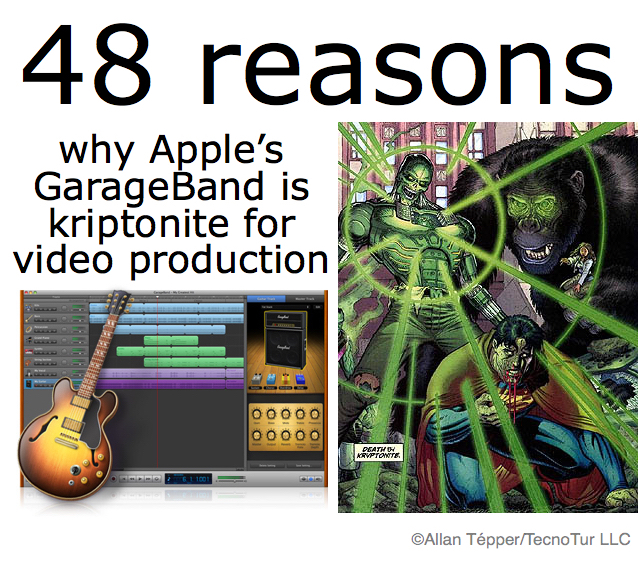
- 48 reasons why GarageBand is kryptonite for video production from February 2015
Upcoming articles, reviews, and books
Stand by for upcoming articles, reviews, and books. Sign up to my free mailing list by clicking here.
Si deseas suscribirte a mi lista en castellano, visita aquí. Si prefieres, puedes suscribirte a ambas listas (castellano e inglés).
Books, consulting, articles, seminars & audio programs
Contact Allan Tépper for consulting, or find a full listing of his books, articles and upcoming seminars and webinars at AllanTepper.com. Listen to his CapicúaFM and TecnoTur programs. Search for CapicúaFM TecnoTur in iTunes or Stitcher Radio.
My latest book (paperback + ebook)
My most recent book is available in two languages, and in paperback as well as an ebook. The ebook format is Kindle, but even if you don’t have a Kindle device, you can read Kindle books on many other devices using a free Kindle app. That includes iPad, Android tablets, Mac computers, and Windows computers. Although generally speaking, Kindle books are readable on smartphones like Androids and iPhones, I don’t recommend it for this particular book since it contains both color photos and color comparison charts. The ebook is also DRM-free.
In English:
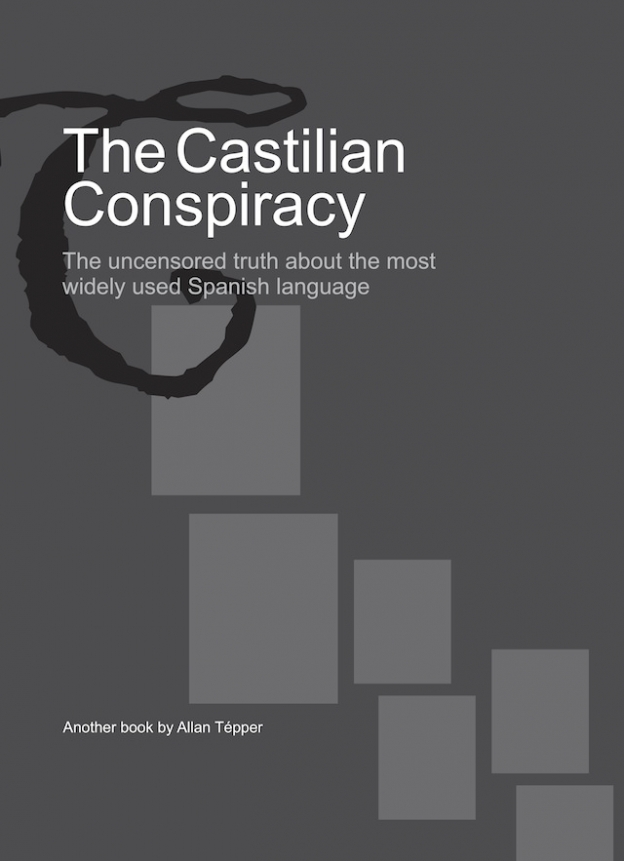
In English, it is currently available in the following Amazon stores, depending upon your region:
- Amazon.com, for the US and other countries in the Americas that don’t currently have their own Amazon store, or anywhere if you simply prefer it
- Amazon.br for Brazil
- Amazon.ca for Canada
- Amazon.de for Germany
- Amazon.es for Spain pero a lo mejor lo preferirás en castellano, a continuación)
- Amazon.fr for France
- Amazon.in for India
- Amazon.it for Italy
- Amazon.co.jp for Japan
- Amazon.com.mx for México
- Amazon.co.uk for the United Kingdom
Or in your favorite bookstore by requesting ISBN–10: 1456310232 or ISBN–13: 978–1456310233.
En castellano:
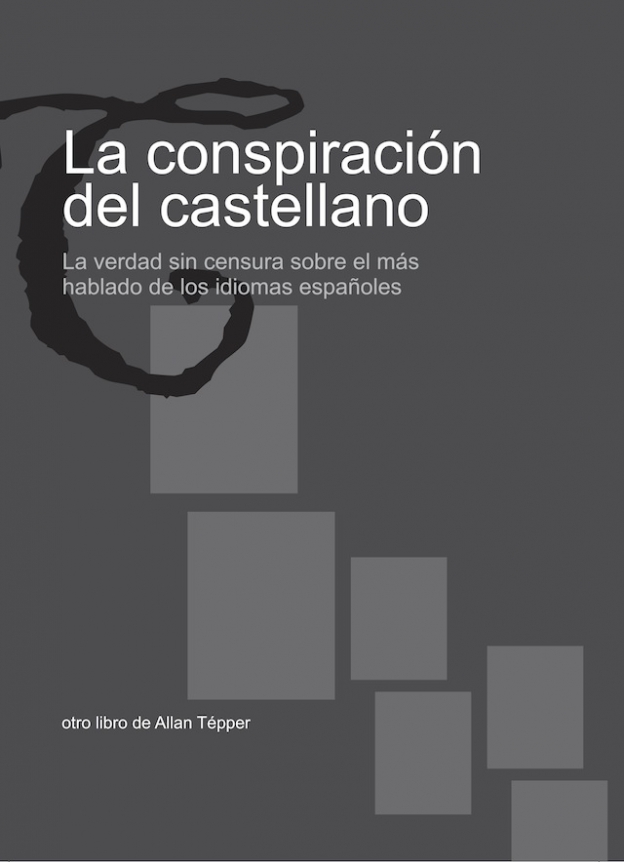
En castellano, está disponible actualmente en las siguientes tiendas Amazon, según tu región:
- Amazon.com para EE.UU. y todas las Américas donde no existe ninguna tienda particular… o en cualquier parte si simplemente lo prefieres
- Amazon.com.br para Brasil
- Amazon.co.jp para Japón
- Amazon.de para Alemania
- Amazon.es para España
- Amazon.fr (Francia)
- Amazon.in para India
- Amazon.it para Italia
- Amazon.com.mx para México
- Amazon.co.uk para el Reino Unido
o en tu librería preferida al solicitar el ISBN–10: 1492783390 ó el ISBN–13: 978–1492783398.
FTC disclosure
No manufacturer is specifically paying Allan Tépper or TecnoTur LLC to write this article or the mentioned books. Some of the other manufacturers listed above have contracted Tépper and/or TecnoTur LLC to carry out consulting and/or translations/localizations/transcreations. Many of the manufacturers listed above have sent Allan Tépper review units. So far, none of the manufacturers listed above is/are sponsors of the TecnoTur programs, although they are welcome to do so, and some are, may be (or may have been) sponsors of ProVideo Coalition magazine. Some links to third parties listed in this article and/or on this web page may indirectly benefit TecnoTur LLC via affiliate programs.
Copyright and use of this article
The articles contained in the TecnoTur channel in ProVideo Coalition magazine are copyright Allan Tépper/TecnoTur LLC, except where otherwise attributed. Unauthorized use is prohibited without prior approval, except for short quotes which link back to this page, which are encouraged!

Filmtools
Filmmakers go-to destination for pre-production, production & post production equipment!
Shop Now